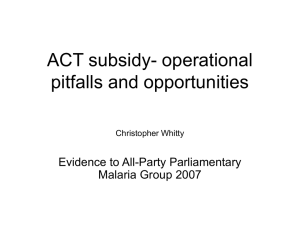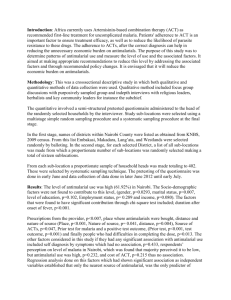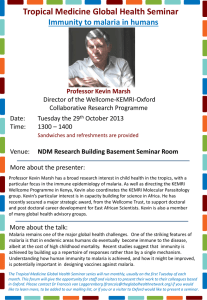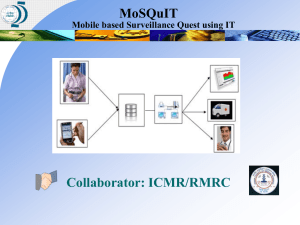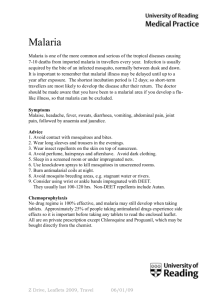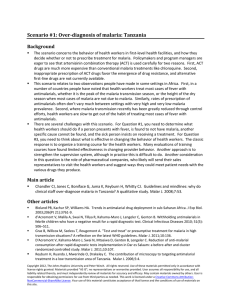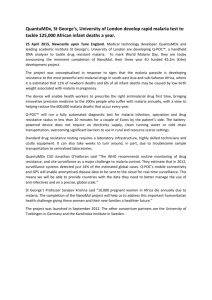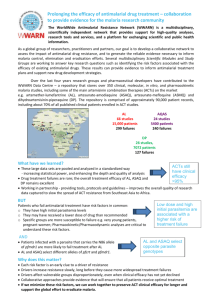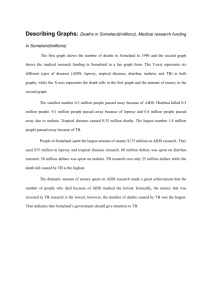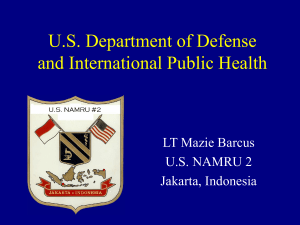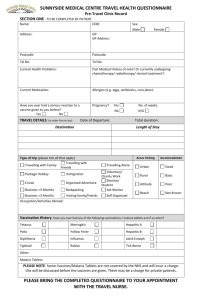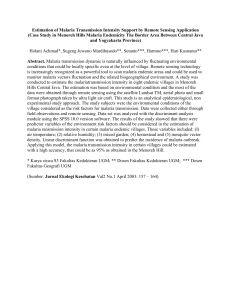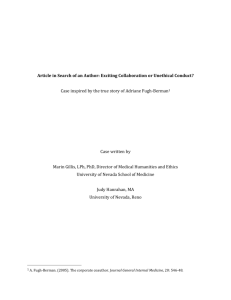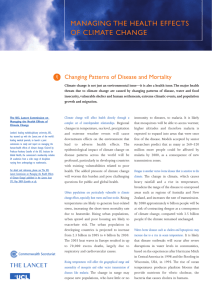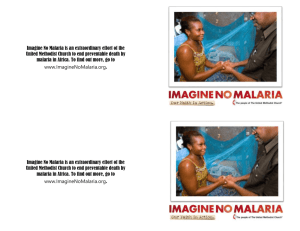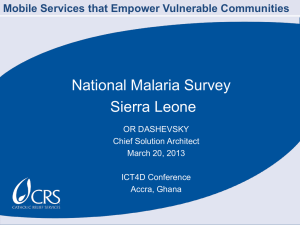Andrea Stewart WWARN Oxford University APPMG January 20 2015
advertisement
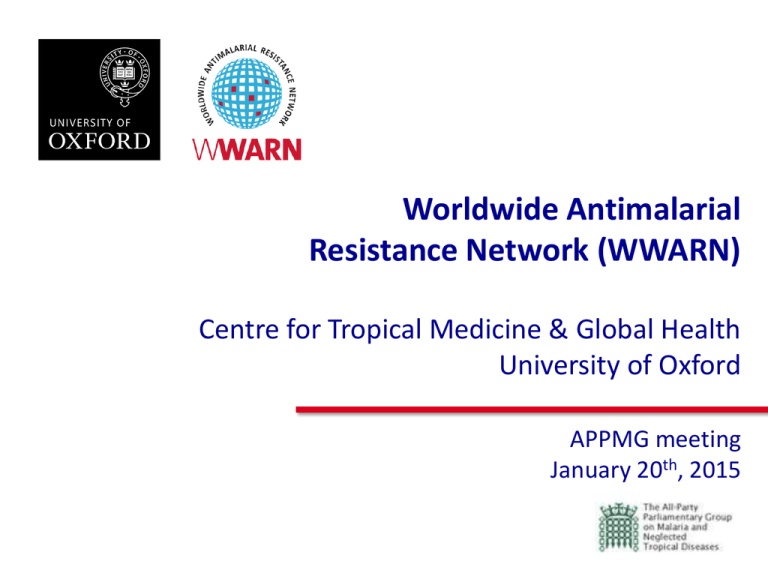
Worldwide Antimalarial Resistance Network (WWARN) Centre for Tropical Medicine & Global Health University of Oxford APPMG meeting January 20th, 2015 Summary of presentation • Background to drug resistance • The Worldwide Antimalarial Resistance Network (WWARN) • Key project examples • • Capacity building in endemic countries • External quality assurance • Drug Quality What next with resistance? Risk factors driving drug resistance Adherence Pregnant Women & Infants Poor Quality Drug interactions Comorbidities Malnutrition Bio-availalibility Revisiting history 2010 1970 2020 • Response to the first waves of resistance o Slow and inadequate risk assessment o High economic cost o Millions of deaths Adapted from Carter & Mendis, 2002 Drug development pipeline: • Existing drugs o Affordable and available o Adaptation with new evidence • New drugs • Pipeline is long and complex • Feed learning from existing medicines Discovery Clinical phases Registration • Change of National policy • Scaling production • Suppliers • Training Flegg et al. American Journal of Tropical Medicine & Hygiene 2013 Access “The spirit of collaboration is permeating every institution and all of our lives… Learning to collaborate enables you to be more effective, problem solve, innovate and develop your knowledge throughout your life…” Don Tapscott WWARN: Collaboration 230 partners Phnom Penh 100,000 clinical trial (patient) results Two thirds of all ACT clinical data published since 2000 Data pooled and analysed to identify failure risks Policy - Data – Funding – Change? WWARN strategy Innovate Address heterogeneity Collate/Collect Building bio-informatics and technical framework • Secure process to share and store data • Data curation o Check data quality • Data standardisation • Data analysis • Data visualisation o Maps o Reports WWARN Data Centre An innovative model • WWARN Data Centre o Develop a scientific and ethical rationale o Provide long term data storage • Translating science into public health action o Enhance the value of existing data o Ensure efficacy of existing and new drugs • Providing accurate and useful intelligence o Share evidence to guide policy: control and elimination strategies Optimising treatment for artemisinin resistant strains • “TRAC” experimental regimen • 3 days artesunate + 3 days ACTs • Cure rate at Day42 in Cambodia - 97.7% [95%CI 90.9 to 99.4] E Ashley, NJ White et al. New England Journal of Tropical Medicine July 2014 Maintain the useful life of existing, valuable ACTs – the power of pooled data • Is AS+AQ (30% of ACT in Africa) a failing combination? • Is dosing of lumefantrine (AL) in infants or pregnant women inadequate ? • Can we validate molecular markers for current ACT partner drugs? Data visualisation • Global access to information • Interactive format • Interrogate data from anywhere Targeted, pro-active surveillance • Guiding surveillance: hotspots • Concentrate effort and investment: high risk areas • Proof of concept with drug cobinations e.g. o seasonal malaria chemoprevention o Malaria in Pregnancy (MiPC) It’s not just about gathering the data…. Quality of trial data? Retrospective v prospective? Drug Quality? WWARN Toolkit: quality management External Quality Assurance Programme Antimalarial quality Intentional fraudulent production Result from negligent factory error Falsified Substandard Degraded Leave factory good quality but degrade due to heat, humidity Drug Quality e.g. Africa 1.4 Million Coartem® seized Angola, Cameroon, DRC, Benin and Nigeria Preventing the global spread of ACT (ART) resistance: what next? o Improve quality and leverage value of existing data o Preserve efficacy of current antimalarials o Optimise treatment o Detect and manage resistance spread/emergence o Adaptive regimen in target areas o Smart surveillance (timely, accurate) o Feed learning into development of new drugs Risk Factors Regime n Target Thank you Visit: wwarn.org Follow: @WWARN Andrea Stewart, Head of Advocacy & Communications APPMG meeting. January 20th, 2015 Cost of inaction? Scenario model: 30% ACTs fail and treatment for severe cases of malaria is reverted to quinine Lubell et al. Malaria Journal 2014 1970 • Each year increase of > than 116,000 deaths • Excess of $32 million in healthcare costs • >$385 million productivity losses due to extended patient illness www.wwarn.org/aqsurveyor
